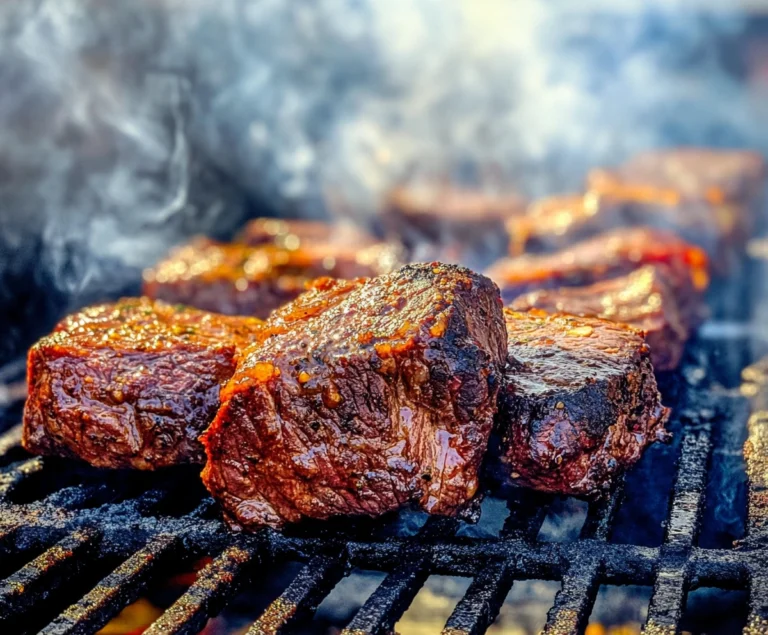Why is my breakfast casserole soggy
Breakfast casseroles are a comforting, go-to dish for many households. They are versatile, easy to prepare ahead of time, and perfect for feeding a crowd. However, a soggy casserole can quickly turn your breakfast plans into a disappointment. Whether you’re making a traditional egg-and-sausage casserole or a veggie-packed bake, sogginess is an issue that frustrates even experienced cooks.
In this comprehensive guide, we’ll explore the various reasons behind a soggy breakfast casserole, offer solutions for avoiding it, and provide expert tips on how to prevent your casserole from turning into a mushy mess.
What Causes a Breakfast Casserole to Become Soggy?
Let’s start by understanding the primary reasons why a breakfast casserole becomes soggy. Most of these causes boil down to three key factors: excessive moisture, improper baking methods, and imbalanced ingredient ratios.
1. Excessive Liquid in Ingredients For my breakfast casserole soggy
One of the main causes of a soggy breakfast casserole is using too much liquid, whether it’s milk, cream, or other wet ingredients like eggs or cheese. Liquids are essential to create the soft, custardy texture of a casserole, but adding too much will leave it soggy.
Why Does This Happen?
The liquid-to-egg ratio is crucial for setting the texture of the casserole. Eggs act as a binder, holding everything together, while milk or cream gives a rich flavor and fluffiness. However, going overboard with these liquids creates excess moisture that can’t evaporate during baking.
- Solution: Stick to a balanced ratio of 1 cup of milk or cream for every 8 eggs. Adjust based on the type of casserole. For richer, creamier casseroles, aim for about ½ cup of cream per 6 eggs.
2. Too Many Vegetables or Wet Ingredients For my breakfast casserole soggy
Vegetables like mushrooms, zucchini, spinach, and tomatoes contain high levels of water. When baked, they release this water, which collects in the casserole and makes it soggy. Similarly, meats like sausage or bacon can release grease if not pre-cooked and drained properly.
Why Does This Happen?
Uncooked or under-drained vegetables and meats can release moisture into the casserole during baking. Vegetables are especially notorious for this, as they tend to hold onto a lot of water.
- Solution: Pre-cook vegetables and meat before adding them to the casserole. You can sauté spinach and mushrooms until most of their water evaporates, or roast zucchini and tomatoes to intensify their flavor while reducing moisture.
If you are unsure about how to cook vegetables properly, check out this detailed guide on preparing vegetables in baked dishes, like the one in this zucchini and mushroom recipe.
3. Improper Cooking Method
Sometimes, your cooking method can cause sogginess in the casserole. Common mistakes include baking at too low a temperature, covering the casserole while it bakes, or not letting it rest after cooking.
Why Does This Happen?
- Low Temperature: Cooking your casserole at a lower-than-recommended temperature can result in the dish cooking unevenly. The edges might firm up while the center remains undercooked and wet.
- Covered Casserole: Covering the casserole with foil throughout the baking process traps steam inside, which leads to sogginess. The steam prevents moisture from evaporating, making the casserole’s texture watery instead of fluffy.
- No Resting Time: After baking, the casserole needs time to rest and firm up. Cutting into it too soon will release the trapped steam and cause the inside to be runny.
- Solution: Bake your breakfast casserole at the recommended temperature, usually 350°F (175°C). If you must cover the dish, do so only for the first 10-15 minutes, then remove the cover to allow the casserole to brown and for moisture to evaporate. Additionally, let the casserole rest for at least 10-15 minutes before serving.
Ingredient-Specific Causes of Sogginess
Every ingredient in your casserole has its role in either contributing to or preventing sogginess. Let’s take a closer look at how some of the most common casserole ingredients impact the final product.
1. High-Water Content Vegetables
Many breakfast casseroles include healthy vegetables, which are great for flavor and nutrition but problematic for texture. Vegetables like mushrooms, spinach, zucchini, bell peppers, and tomatoes hold a significant amount of water that gets released during cooking.
Why Does This Happen?
Vegetables release water when they are exposed to heat. If these veggies are added raw to the casserole, they can release moisture into the dish as they bake, resulting in a soggy texture.
- Solution: Always pre-cook vegetables. For example, mushrooms and spinach should be sautéed until they release most of their moisture. Tomatoes can be roasted to intensify their flavor while evaporating excess water. Zucchini and bell peppers benefit from grilling or roasting before being added to the casserole mix.
For more ideas on how to prepare vegetables for casseroles, explore recipes like this zucchini and mushroom dish, which provide great tips on cooking vegetables for texture balance.
2. Frozen Ingredients
Using frozen ingredients like hash browns or frozen vegetables can be convenient, but they also contribute to sogginess if they aren’t thawed properly.
Why Does This Happen?
Frozen vegetables and hash browns have ice crystals that melt during cooking. If they aren’t thawed and drained properly before being added to the casserole, the melted water will soak into the dish.
- Solution: Always thaw frozen ingredients completely and drain any excess water before adding them to your casserole. You can even pat them dry with paper towels to remove additional moisture.
3. Cheese and Dairy Overload
Cheese and cream-based sauces can add a lot of richness to a casserole, but too much cheese or cream can lead to a greasy, heavy dish that feels soggy rather than creamy.
Why Does This Happen?
Cheese melts during cooking and releases fats. If too much cheese is added, this fat has nowhere to go, which leaves the casserole greasy and wet.
- Solution: Use cheese sparingly. A layer of shredded cheese on top adds a nice crust, but don’t overdo it in the casserole base. Additionally, choose cheeses that melt well without becoming overly greasy, such as mozzarella, cheddar, or Gruyère.
For delicious yet well-balanced cheesy dishes, you can explore guides like this Alice Springs Chicken recipe that incorporate cheese without overwhelming the dish.
Cooking Methods to Avoid a Soggy Casserole
In addition to controlling ingredients, the way you bake your casserole is crucial to achieving the perfect texture. Here are some key tips for baking methods that prevent sogginess.
1. Bake at the Right Temperature
Cooking at a lower temperature can result in uneven baking, with the center staying wet and undercooked while the edges become firm.
- Solution: Bake your casserole at the recommended temperature. Most breakfast casseroles bake well at 350°F (175°C). If you notice that the edges are cooking faster than the center, cover the edges with foil while letting the center bake through.
2. Bake Uncovered
Covering your casserole traps steam inside the dish, which prevents moisture from evaporating. This trapped moisture can lead to a wet texture rather than the desired fluffiness.
- Solution: Bake your casserole uncovered to allow the steam to escape. If you’re worried about over-browning, you can loosely cover the casserole with foil for the first 10 minutes, but remove it afterward to ensure moisture evaporates.
3. Let It Rest After Baking
Once your casserole comes out of the oven, it needs time to set. Letting it rest helps the eggs and other ingredients firm up, which prevents the casserole from being too runny when cut into.
- Solution: Let your casserole rest for 10-15 minutes after it’s done baking. This gives the dish time to cool slightly and firm up, resulting in a much better texture.
4. Add a Starch Layer
If you’re working with especially moist ingredients like tomatoes or zucchini, adding a starch layer to your casserole can help absorb some of the excess moisture.
- Solution: Use bread cubes, croutons, or even hash browns at the base of your casserole. The starch helps soak up liquid while still providing a firm texture.
For more tips on improving the texture and moisture balance in baked goods, explore guides on AureliaRecipes like this mini cupcake recipe guide for similar techniques used in different baking scenarios.
How to Adjust Your Breakfast Casserole Recipe
Sometimes, the recipe itself can be the source of your casserole’s sogginess. Making small adjustments to the recipe can help ensure the casserole bakes up light and firm. Here’s how you can tweak your favorite recipe to avoid sogginess.
1. Balance the Egg-to-Liquid Ratio
Too much liquid in the form of milk, cream, or even eggs can result in a soggy casserole. The right egg-to-liquid ratio is critical for a casserole that sets up firm without being too dense.
- Solution: For every 8 large eggs, use about 1 cup of milk or cream. If you prefer a firmer casserole, reduce the milk slightly. For a softer, more custard-like casserole, you can add a little more cream, but be cautious not to overdo it.
2. Add a Starch Layer to Absorb Moisture
Bread, croutons, or hash browns can act as a sponge, soaking up excess moisture from other ingredients.
- Solution: Layer the bottom of your casserole dish with cubes of day-old bread or a bed of hash browns. This provides texture and helps absorb excess moisture from vegetables and meats.
3. Use the Right Cheese
Choose cheeses that melt well but don’t release too much grease. Avoid overusing soft, creamy cheeses that can make the casserole feel heavy.
- Solution: Opt for firm cheeses like mozzarella, cheddar, or Swiss for a nice melt without too much grease. Reserve softer cheeses like ricotta or cottage cheese for layering in small amounts.
Frequently Asked Questions (FAQs)
1. How do I prevent my breakfast casserole from getting soggy?
- To avoid sogginess, balance the egg-to-liquid ratio, pre-cook and drain vegetables and meats, and bake the casserole uncovered at the correct temperature. Make sure to let it rest before cutting.
2. What is the best egg-to-liquid ratio for breakfast casseroles?
- The ideal ratio is 1 cup of milk or cream per 8 large eggs. This ensures a firm texture without the casserole becoming too dense or watery.
3. Can I fix a soggy casserole after it’s already baked?
- While it’s hard to fully reverse a soggy casserole, you can bake it uncovered at a higher temperature for an additional 10-15 minutes to evaporate some of the moisture.
4. Can I use frozen vegetables in a breakfast casserole?
- Yes, but make sure they are fully thawed and drained to prevent excess moisture. Pat them dry with paper towels to remove any remaining water.
5. Should I cook vegetables before adding them to a casserole?
- Yes, vegetables should be pre-cooked to remove moisture. Sautéing or roasting vegetables like spinach, mushrooms, or zucchini helps prevent sogginess.
Conclusion
A perfectly baked breakfast casserole is a great way to start your day, and by following these tips, you’ll avoid the common pitfall of a soggy dish. The key lies in balancing your ingredients, especially moisture-heavy vegetables and dairy products, and cooking your casserole at the right temperature and time.
Don’t forget to pre-cook ingredients like mushrooms and spinach to release excess water, and use a starch base like bread cubes to absorb additional moisture. By baking uncovered and letting the casserole rest, you can ensure a fluffy and delicious meal every time. For more tips on creating moisture-balanced dishes, check out this ultimate guide to cupcake baking to see how moisture control affects different types of baked goods.







